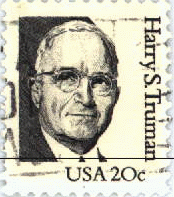Introduction
U.S. foreign trade and global economic policies have changed direction dramatically from the early days of the nation, when the United States mostly pursued the development of its own economy, irrespective of what went on abroad. In the years since World War II , the United States has generally pursued the liberalization of international trade and coordination of the world economic system.
 The United States dominated many export markets for much of the
postwar period, thanks to
an industrial machine untouched by war damage as well as advantages
in technology and manufacturing techniques. But in the
1970s and 1980s,
the gap between the United States and other countries' export competitiveness
narrowed, and -- for some types of products -- other countries'
exports increased more rapidly than those of the United States.
The United States dominated many export markets for much of the
postwar period, thanks to
an industrial machine untouched by war damage as well as advantages
in technology and manufacturing techniques. But in the
1970s and 1980s,
the gap between the United States and other countries' export competitiveness
narrowed, and -- for some types of products -- other countries'
exports increased more rapidly than those of the United States.
The oil price shocks of the 1970s, the ensuing worldwide recession, and increases in the foreign exchange value of the dollar acted to hurt the U.S. trade balance and to reduce domestic support for trade liberalization in the 1980s.
As a result of these events, hundreds of protectionist bills were introduced in Congress during the 1980s. Although some protectionist measures were enacted, U.S. leaders were to a large extent successful in deflecting the most regressive proposals. In fact, the United States led the drive to begin the most recent series of multilateral trade negotiations, known as the Uruguay Round (the agreement to begin the round took place at talks in Punta del Este, Uruguay), which was launched in September 1986 as a vehicle for achieving greater trade liberalization.
